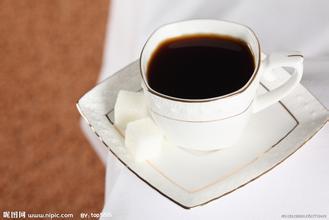Fragrant Indonesian Manning Coffee Flavor and Taste introduction of boutique coffee beans in manor producing area
Since 1968, especially after the adjustment of the economic structure and product structure in the 1980s, the economy has developed.
Light Rail in Jakarta
Light Rail in Jakarta
The exhibition has made some achievements. In the first 25-year long-term construction plan, GDP grew at an average annual rate of 6%, and inflation was controlled within 10%. In April 1994, we entered the second 25-year long-term construction plan, that is, the stage of economic take-off. The government has further relaxed investment restrictions, attracted foreign investment, and taken measures to vigorously support small and medium-sized enterprises, develop tourism and increase exports. In 1997, it was hit hard by the financial crisis in Southeast Asia, with a sharp recession, currency depreciation and high inflation. In order to extricate itself from economic difficulties, the government was forced to turn to the International Monetary Fund (IMF) for help. In 1999, the economy began to recover slowly, but there was great resistance to rectification and reform, and it was difficult to solve the problems such as foreign debts of private enterprises and bad debts of banks.
According to Indonesia's domestic statistics, Indonesia's gross domestic product in 2011 is about 8000 trillion rupiah (about 1 trillion U.S. dollars). [7]
Industry
In 2013, industry accounted for 46.04% of GDP, of which the mining industry accounted for 11.44%, the manufacturing industry accounted for 23.59%, the electric and water supply industry accounted for 0.83%, and the construction industry accounted for 10.18%.
Indonesia is rich in oil and gas resources, with a total of 66 oil and gas basins, 15 of which produce oil and gas. The oil reserves announced by the government are 9.7 billion barrels, equivalent to 1.31 billion tons, of which 4.74 billion barrels, or 640 million tons, are verified. Indonesia's natural gas reserves are 176.6 trillion standard cubic feet (TCF), equivalent to 4.8-5.1 trillion cubic meters. Oil exploration and development basically depends on foreign oil companies. Indonesia's oil production has gradually declined. Since 2003, Indonesia has become a net importer of oil. In early 2008, Indonesia announced its withdrawal from the Organization of Petroleum Exporting countries (OPEC). Indonesia's crude oil and condensate production fell to 870000 barrels per day in 2012, below the government's production target of 930000 barrels per day. Indonesia's largest oil company is the National Oil Company (Pertamina, Fortune 500 ranked 123rd in 2014). [6]
Indonesia's mining industry has created considerable economic benefits for the development of Indonesia's national economy. It is an important source of foreign exchange earned by exports and an important source of financial revenue from the central and local governments. It has also made positive contributions to maintaining economic vitality, creating jobs and developing the regional economy. At the same time, it also plays an indirect role in radiating other social and economic fields and promoting the development of remote areas. Indonesia's main mineral products are tin, aluminum, nickel, iron, copper, tin, gold, silver, coal and so on. The largest state-owned mining company in Indonesia is Anta, in addition to the Indonesian state-owned tin group.
The gentleman in coffee-Sumatra Manning Mantenin is a fine coffee bean growing in the plateau and mountain area at an altitude of 750-1500 meters, implying a kind of tenacity and a great spirit that can be taken up and put down. It represents a kind of masculinity, drink with a kind of happy dripping, wanton, gallop scenery, this taste makes men fascinated.
Life is full of achievement and pride because of Manning. The world is full of sunshine and love because of Manning. Perhaps this is just as life becomes great because of ideals, and life becomes extraordinary because of practice. Manning has always expressed its most unique sweetness with the most unique bitterness, as if it were life. When we first taste it, we may be surprised, no matter how much sugar can not hide the bitter taste, but we can not help ourselves and crazy infatuated with its charming aroma, like thorns on the edge of flowers, sobering and conscious.
Manning's suffering will not upset you, but will make you feel more awake. Before you encounter real pain, Manning is just an ordinary drink with a bitter taste, a refreshing liquid, a tool to slow you down, and it can't feel your grievance yet. but there are many people who are madly infatuated with Mantenin's bitterness, as if they can't quit if they are poisoned. If you want to know why, they will smile and tell you: "because love is bitter." Manning style Manning leaping micro-acid mixed with the richest aroma, so that you can easily taste the lively factor in the mild fragrance, its outstanding taste has confused many suitors.
In the 17th century, the Dutch first introduced Arabica saplings to Ceylon (present-day Sri Lanka) and Indonesia. In 1877, a large-scale disaster hit the Indonesian islands, coffee rust destroyed almost all the coffee trees, people had to give up Arabica, which had been in operation for many years, and introduced the disease-resistant Robusta coffee tree from Africa. Indonesia today is a big coffee producer. Coffee is mainly produced in Java, Sumatra and Sulawi, with Robusta accounting for 90% of the total production. Sumatra Manning is a rare Arabica species. Planted on hillsides between 750m and 1500 m above sea level, the mysterious and unique Sumatran species give Mantenin coffee a rich aroma, rich taste, strong flavor, slightly chocolate and syrup flavor.
Manning Coffee
Mantenin has a strong taste, with a strong mellow and rich and lively sense of movement, neither astringent nor sour, mellow and bitter can be fully revealed. The appearance of Mantenin coffee beans is arguably the ugliest, but coffee fans say that the worse the Sumatran coffee beans are, the better, mellow and slippery they are. In addition to the mellow taste of Indonesian coffee, there is also a bitter sweet taste, sometimes mixed with a touch of mildew, which is popular with people who like to drink concentrated roasted coffee. Sumatra manning coffee is called "classic" because it is stored in the cellar for three years before export. But the collection coffee is not old coffee, but slightly pale coffee through special treatment, this kind of coffee is more full-bodied, the acidity will decrease, but the mellowness will increase, the finish will be longer, and will bring a strong spicy flavor, sometimes sour, sometimes walnut, sometimes chocolate. Before Blue Mountain Coffee was discovered, Manning was regarded as the best coffee.

Important Notice :
前街咖啡 FrontStreet Coffee has moved to new addredd:
FrontStreet Coffee Address: 315,Donghua East Road,GuangZhou
Tel:020 38364473
- Prev

Bright taste Panamanian coffee flavor manor features boutique coffee beans introduction
Far from the southwest coast of Panama, Kuiba National Park protects the waters around Kuiba, 38 small islands and Chiriki Bay. Koiba's Pacific rainforest is unaffected by cold winds and El Ni ñ o. Due to the continuous evolution of new species, it contains extremely high levels of endemic mammals, birds and plants. This is the last of many endangered animals like the crowned eagle.
- Next

Flavor and taste of Jamaican Blue Mountain Coffee introduction to boutique coffee beans in manor area
When it comes to Jamaica, everyone's eyes lit up immediately because it produced the best Jamaican Blue Mountain Coffee (Jamaica Blue Mountain) in the world. We absolutely believe that Jamaica Blue Mountain Coffee is the best coffee, its acid, sugar, alcohol and bitterness are well balanced, fragrant and smooth to drink, but its price is too high, although it is worth a try, there is no need to do so.
Related
- Detailed explanation of Jadeite planting Land in Panamanian Jadeite Manor introduction to the grading system of Jadeite competitive bidding, Red bid, Green bid and Rose Summer
- Story of Coffee planting in Brenka region of Costa Rica Stonehenge Manor anaerobic heavy honey treatment of flavor mouth
- What's on the barrel of Blue Mountain Coffee beans?
- Can American coffee also pull flowers? How to use hot American style to pull out a good-looking pattern?
- Can you make a cold extract with coffee beans? What is the right proportion for cold-extracted coffee formula?
- Indonesian PWN Gold Mandrine Coffee Origin Features Flavor How to Chong? Mandolin coffee is American.
- A brief introduction to the flavor characteristics of Brazilian yellow bourbon coffee beans
- What is the effect of different water quality on the flavor of cold-extracted coffee? What kind of water is best for brewing coffee?
- Why do you think of Rose Summer whenever you mention Panamanian coffee?
- Introduction to the characteristics of authentic blue mountain coffee bean producing areas? What is the CIB Coffee Authority in Jamaica?

